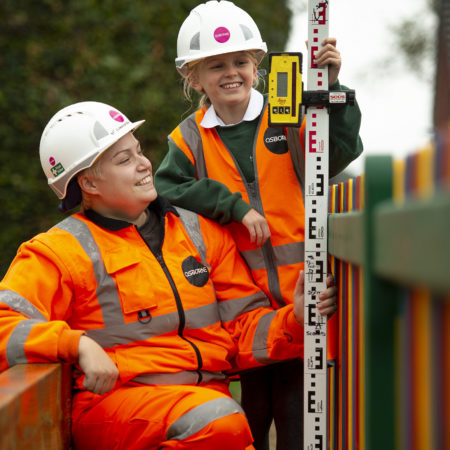Does the Construction Industry Really Want to Tackle the Lack of Diversity?
The need for greater diversity is clearly there.
The construction industry needs a more diverse and inclusive workforce because we know that more diverse businesses perform better, are more creative and are more sustainable.
We need a more diverse workforce so that we can create a built environment that better meets the needs of communities.
We need a more diverse workforce because, frankly, without it we’ll never meet the growing and evolving skills needs of our industry.
But do we want one? If that sounds like an odd question ask yourself this: why, if the need is so clear, has so little changed? Why is the industry still stuck with the image of being old-fashioned and male-dominated?
Back in 2015, Professor Denise Bower chaired an ICE event that explored questions such as: Why is diversity so important? How do we create a more diverse workforce? And how do we ensure that more people have the chance to contribute?
There was a simple argument behind all of this. To attract enough high calibre engineers to support the next ten years of major infrastructure investment, we must engage the entire talent pool. We can’t afford to exclude at least 50% of potential candidates.
The challenges set out in Construction 2025 demand innovative solutions. To find them we need more than gender and ethnicity diversity. We need diversity of outlook, values, experience and behaviours.
A Question of Leadership
Industry leaders need to make a real effort to encourage diversity in its broadest sense. This starts by admitting that they might not have all the ideas. It was revealing that industry representatives on a Scottish Parliament panel looking at diversity in construction were all male. Would that really provide MSPs with the insights they need to develop policy?
Industry leaders have to listen, note, challenge and take on the best ideas from their staff.
Entrenched issues such as making senior jobs more attractive, with the long hours and travel involved, call for bold leadership. How can we make these roles more compatible with a work/life balance while still respecting the needs of a deadline-driven business? Any person with a family will need help from their spouse, partner, family or hired childcare. Employers should see themselves as part of that support network.
The onsite environment and facilities are clearly a barrier. But we should beware of making assumptions that switching to offsite construction will, on its own, have a major impact. Manufacturing doesn’t do significantly better than construction when it comes to the percentage of female employees.
A few practical measures will also help, such as:
- Making diversity promotion more collaborative and supportive between different organisations.
- Better understanding and elimination of unconscious bias in selection.
- More opportunities to convert into engineering roles at all stages of somebody’s career.
There’s still a long way to go but we are starting to see some progress. Osborne’s gender pay gap data shows that the gaps in mean and median pay are closing. Among our employees aged under 40 the gap was less than half the UK average. We are starting to see the benefits of changes in our selection processes and other investments such as our learning management system.
The industry at least understands the mechanics of change. And we know that we have opportunities for exciting and rewarding careers for anyone ready to embrace them. What we still have to work on is the cultural shift to reap the benefits of diverse organisations.

